Right at this very moment, it’s pretty darned cold here in Kansas, and the temperatures are just beginning to drop. We have about 3 inches of snow on the ground in Ottawa (though the drifting makes it hard to guess just how much we really got last night) and I was shoveling snow in a -10 degree wind, giving up when the fog on my fogged-up glasses froze. I love my old 1901 house, but I’m really thankful for the double-pane glass replacement windows right now. They’re not as pretty as the original double-hung wood-frame windows probably were, but I suspect even the original owners of our home would prefer the replacement windows to a cold and drafty house.
Cold weather makes me want to curl up on the couch and read, and right now, I’m binging on books about weather. Some of them are about Kansas weather, some of them are about weather on the plains, some of them are about weather on the coasts. All of them are about what happens when humans don’t understand that the earth’s weather patterns are so much bigger than we are and try to defy it. And thanks to the miracle of eReaders, online shopping, and online library services, I don’t even have to go out into the weather to read about it.
Here are some of my favorite weather books. I’d love to hear your recommendations, too!
COLD
The Children’s Blizzard by David Laskin
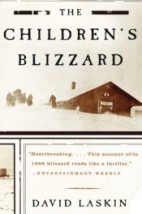 In 1888, a powerful cold front blew across the Dakota-Nebraska Prairie, turning a comfortable winter day into a raging blizzard as children began their walks home from their rural one-room school houses. By the next morning, more than 100 children were found dead on the prairie. Laskin does an incredible job of weaving together the stories of nature, the fledgling U.S. weather service, and the lives of immigrants who didn’t understand their the weather patterns of their chosen homeland. You’ll become very attached to these children as he tells their story, and you won’t know who survived and who didn’t until the end of the book.
In 1888, a powerful cold front blew across the Dakota-Nebraska Prairie, turning a comfortable winter day into a raging blizzard as children began their walks home from their rural one-room school houses. By the next morning, more than 100 children were found dead on the prairie. Laskin does an incredible job of weaving together the stories of nature, the fledgling U.S. weather service, and the lives of immigrants who didn’t understand their the weather patterns of their chosen homeland. You’ll become very attached to these children as he tells their story, and you won’t know who survived and who didn’t until the end of the book.
Blizzard! The Storm That Changed America by Jim Murphy
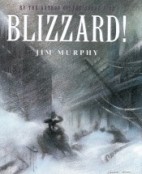 A few months after the Children’s Blizzard, a catastrophic blizzard hit New York. What makes this book fascinating is that it’s an account not only of the devastating storm, but also the resulting overhaul in municipal policy, such as the development of city-wide snow removal and the burying of power lines. This book was written for a YA audience, but it is a great read for adults, too.
A few months after the Children’s Blizzard, a catastrophic blizzard hit New York. What makes this book fascinating is that it’s an account not only of the devastating storm, but also the resulting overhaul in municipal policy, such as the development of city-wide snow removal and the burying of power lines. This book was written for a YA audience, but it is a great read for adults, too.
WET
The Great Hurricane: 1938 by Cherie Burns
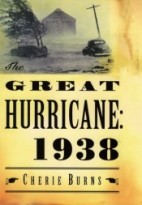 Burns gives an hour-by-hour account of a powerful hurricane that took New England completely by surprise. She also paints a picture of the people on the coast that day–the wealthy in their mansions and the poor who worked in and alongside the ocean. It’s an interesting account of a bygone era as well as a cautionary tale of how vulnerable any of us–regardless of wealth or power–are when it comes to the weather.
Burns gives an hour-by-hour account of a powerful hurricane that took New England completely by surprise. She also paints a picture of the people on the coast that day–the wealthy in their mansions and the poor who worked in and alongside the ocean. It’s an interesting account of a bygone era as well as a cautionary tale of how vulnerable any of us–regardless of wealth or power–are when it comes to the weather.
Johnstown Flood by David McCullough
 We’ve all heard about the 1889 flood that wiped out Johnstown, Pennsylvania. What most of us don’t realize is how a handful of industrialists–Andrew Carnegie, Henry Flick, and Andrew Mellon–were part of the reason why it was so devastating. More than 2,000 lives were lost when heavy rains caused the dam at their improperly maintained private lake to burst, sending a wall of water into Johnstown. This book is also an account of the newly formed American Red Cross, which was called into action to help the survivors.
We’ve all heard about the 1889 flood that wiped out Johnstown, Pennsylvania. What most of us don’t realize is how a handful of industrialists–Andrew Carnegie, Henry Flick, and Andrew Mellon–were part of the reason why it was so devastating. More than 2,000 lives were lost when heavy rains caused the dam at their improperly maintained private lake to burst, sending a wall of water into Johnstown. This book is also an account of the newly formed American Red Cross, which was called into action to help the survivors.
WINDY
And Hell Followed With It: Life and Death in a Kansas Tornado by Bonar Menninger
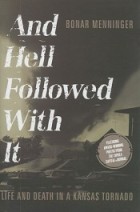 I’ve recommended this one before, and I’ll recommend it again. This is an well-written account of the 1966 tornado that destroyed much of Topeka, Kansas, as well as the efforts of various citizens who worked to keep the public informed of its path. It’s chilling to think about how many lives would have been lost had the radio and weather people not worked on a homegrown warning system.
I’ve recommended this one before, and I’ll recommend it again. This is an well-written account of the 1966 tornado that destroyed much of Topeka, Kansas, as well as the efforts of various citizens who worked to keep the public informed of its path. It’s chilling to think about how many lives would have been lost had the radio and weather people not worked on a homegrown warning system.
The Worst Hard Time by Timothy Egan
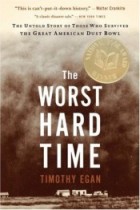 Much like Laskin’s Children’s Blizzard, Egan’s book really demonstrates the peril of not understanding your environment. The Worst Hard Time is a powerful account of the people who moved to areas like Western Kansas, Eastern Colorado, and Western Oklahoma, and how their farming and ranching practices, combined with natural weather patterns, created the Dust Bowl. It’s an important read for anyone who wants to understand just how quickly we can alter the landscape. Also, I found my lungs seizing up just reading about all of that dust in the air.
Much like Laskin’s Children’s Blizzard, Egan’s book really demonstrates the peril of not understanding your environment. The Worst Hard Time is a powerful account of the people who moved to areas like Western Kansas, Eastern Colorado, and Western Oklahoma, and how their farming and ranching practices, combined with natural weather patterns, created the Dust Bowl. It’s an important read for anyone who wants to understand just how quickly we can alter the landscape. Also, I found my lungs seizing up just reading about all of that dust in the air.
METEOROLOGISTS
Warnings: The True Story of How Science Tamed the Weather by Mike Smith
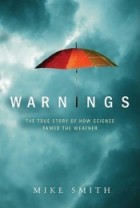 And here’s the book I’m reading now: a history of storm prediction and the development of a storm warning system, as told by meteorologist Mike Smith, who himself witnessed the Ruskin Heights Tornado. This book does not make me feel fond of the earlier leadership at the National Weather Service, who actively discouraged tornado research and the issuing of tornado warnings, but it does make me want to cheer for the meteorologists who pursued it both for science and the common good. Also, I never realized how scary flying in a plane would have been before meteorologists discovered downdrafts. Eeek.
And here’s the book I’m reading now: a history of storm prediction and the development of a storm warning system, as told by meteorologist Mike Smith, who himself witnessed the Ruskin Heights Tornado. This book does not make me feel fond of the earlier leadership at the National Weather Service, who actively discouraged tornado research and the issuing of tornado warnings, but it does make me want to cheer for the meteorologists who pursued it both for science and the common good. Also, I never realized how scary flying in a plane would have been before meteorologists discovered downdrafts. Eeek.
Happy reading!



